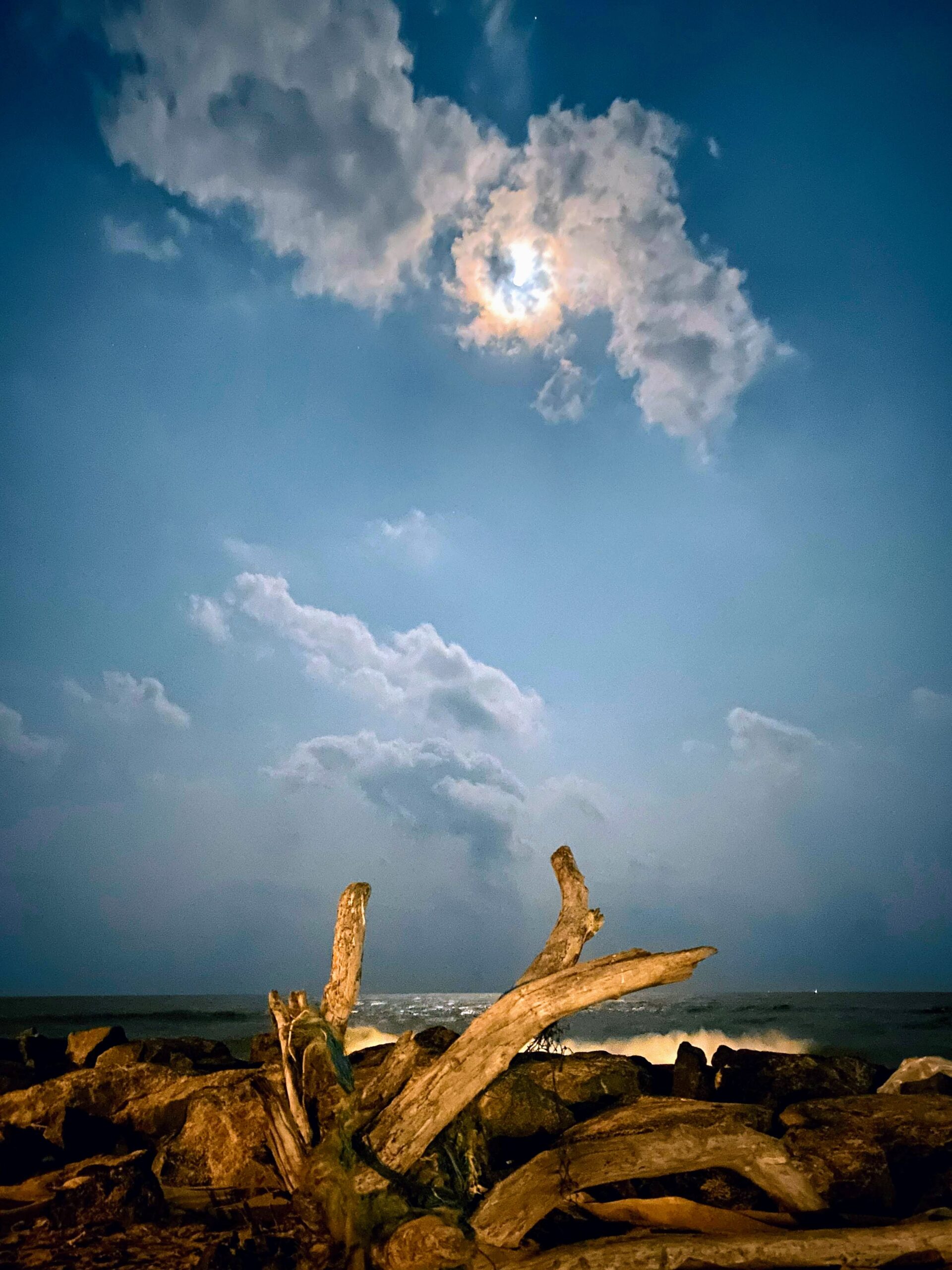Quest for Salvation in the Wonders of Nature
TimeSeeds of Universe- 5
I remembered the live telecast of the Total Solar Eclipse in India in 1999, and the excitement of wanting to go out and watch the eclipse in Patna. However, we were not allowed to do so because we didn’t have the necessary protective gear. While we watched the live telecast from Srikakulam, we also noticed other people watching the eclipse from their windows, using makeshift gears.
The eclipse on June 21, 2020, was a special event, but I still didn’t have the protective gear to view it directly. It turned completely dark outside for a few seconds while we were watching the live telecast. My four-year-old daughter was amazed by the play of shadows and wanted a live demonstration of the story I had told her the previous night about the interaction between the Sun, Moon, and Earth. I was in complete awe of this natural wonder and wondered what it must have been like for ancient people who observed the changing sky, witnessed eclipses, and made calculations based on them.
Now, a big question loomed before me: How do Hindus acquire knowledge about upcoming eclipses and perform their associated rituals? How did they incorporate complex calculations into their timekeeping methods? There is evidence in texts, temple designs, and community practices spanning millennia, suggesting that the Hindu community possessed knowledge, awareness, and adaptability regarding eclipses.
The scientific causes of lunar and solar eclipses were well-known to ancient Hindu astronomers, even during the pre-Āryabhṭan period. Āryabhaṭa I (born 476 CE) clearly explained the causes of solar and lunar eclipses, stating, “Moon covers Sun in solar eclipse, and the great shadow (of the earth) eclipses Moon”
छादयति शशी सूर्यं शशिनं महती च भूच्छाया (Āryabhaṭīya 4.37.)
Varāhamihira (c. 505 CE) described the eclipse procedures in his Bṛhatsaṃhitā and dispelled irrational myths. He stated, “At a lunar eclipse, Moon enters the shadow of the earth, and at a solar eclipse, Moon covers Sun’s disc” .
भुच्छायाम स्वग्रणये भास्करम अर्काग्रहे प्रविष्टि इंदु (Bṛhatsaṃhitā, 5.8).
Across different parts of India, there are temples designed with astronomical mindfulness. Gavi Gangadhareshwara Temple in Bangalore, Konark Temple in Odisha, and Udaygiri Hills Temple in Madhya Pradesh have detailed inscriptions, symbols, and statues depicting astronomical events. Observational sites in hills and forests are scattered throughout the country. Archeo-astronomical sites and megalithic sites are hidden in various regions, such as the mushroom-shaped Kudakkal in Kerala, dolmen at Mallasandram in Tamil Nadu, and menhir at Nilaksal, Karnataka.
In the past two years, I have had the opportunity to visit some of these places. The experience feels like traveling through time, with those ancient marks engraved in stone. It fills me with wonder and respect for the curiosity of our ancestors in understanding nature. The pursuit of knowledge was a path to salvation—a true quest for salvation.
My quest for answers about eclipses and the knowledge possessed by ancient civilizations, particularly the ancient Hindus, has astonished me. They were able to estimate with significant precision the place, date, and time of solar and lunar eclipses. Calculating eclipses requires an understanding of the models of the solar system and the different motions of the Sun, Earth, and Moon, as well as the alignment of these bodies in time and space. It demands advanced mathematical tools and models to predict eclipses well in advance. How well-equipped were the ancient Hindus to make such predictions, taking into account the diverse motions of the Earth, Sun, and Moon?
Knowledge about eclipses was not limited to an elite group of scientists; awareness was widespread among the people. Elaborate rituals are associated with these astronomically fascinating events and have an unbroken tradition throughout the country. Even today, every community knows about the upcoming eclipse dates and times. Since childhood, I have heard about the standard rules for solar eclipses: not going outdoors, avoiding direct gaze at the Sun during the eclipse phase, abstaining from eating, and pregnant women avoiding exposure. These rules align with the safety guidelines suggested by modern scientists. Communities also practice rituals involving bathing, cleansing, and donation during lunar eclipses.
Who were these people with such a deep interest, profound observational abilities, and an awe-inspiring appreciation for the boundless wonders of nature? I am intrigued by how meticulously they wove reverence for these natural marvels into the community’s rituals, forging a connection between humans and the cosmos. I bow down to the great Rishis whose minds could decipher the language of nature. I feel as though I am being guided by an invisible hand into an entirely new realm—the realm of ancient Hindu science and the scientific accomplishments of other civilizations in the world.
Books:
- Science of the Ancient Hindus by Alok Kumar
- A History of Science in World cultures by Scott L. Montgomery and Alok Kumar
- The History of Indian Astronomy by K Ramasubramanian, Aniket Sule Mayank Vahia
—–
Time Seeds of Universe is a series on understanding time. ‘TimeSeeds of Universe: Quest for Salvation in the Wonders of Nature‘ is part 5 in this series. Following are the link to other blogs of this series :
Time Seeds of Universe-1 : A Journey of Self-Discovery
Time Seeds of Universe- 2: It is about Reference Frame











